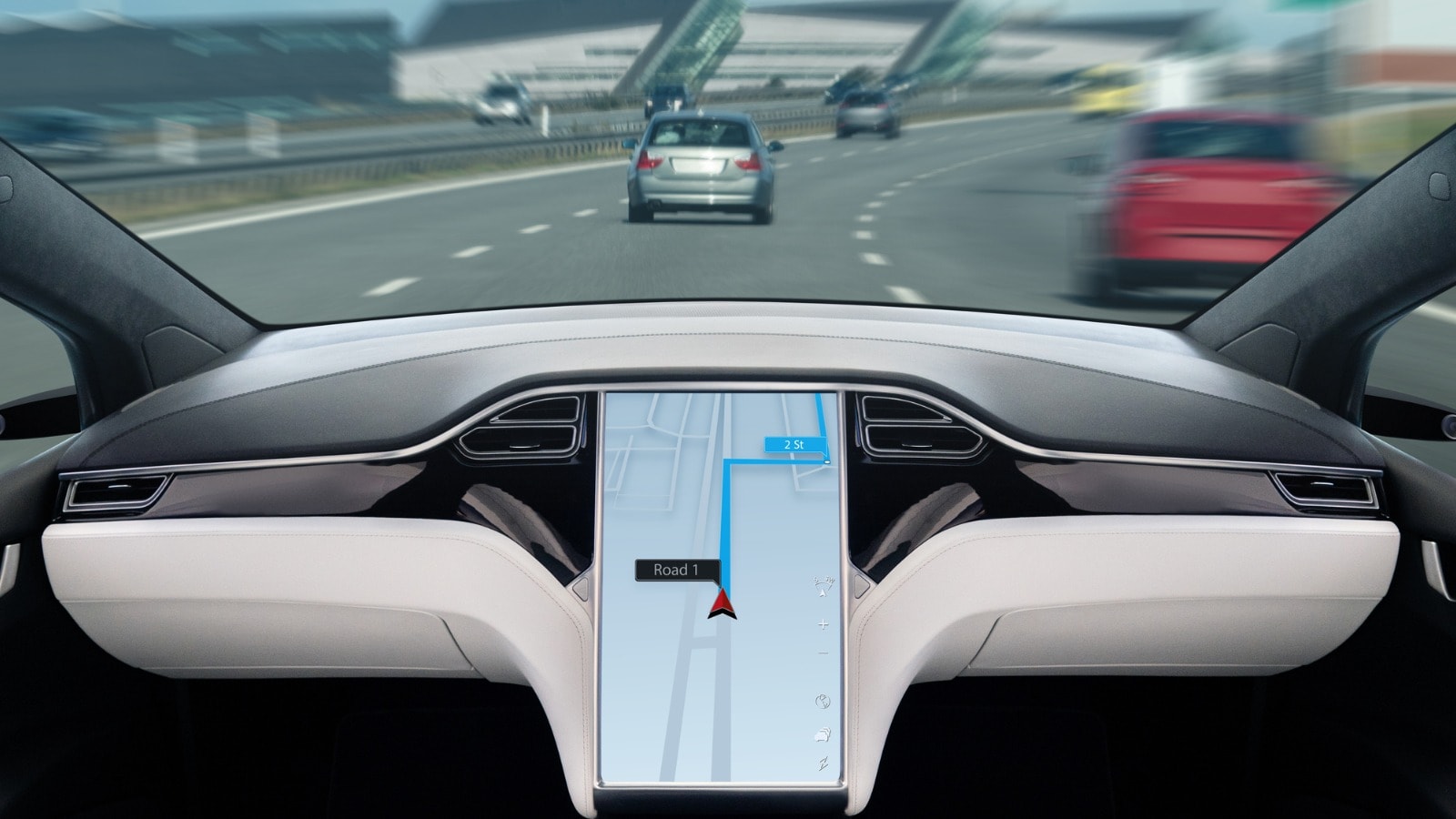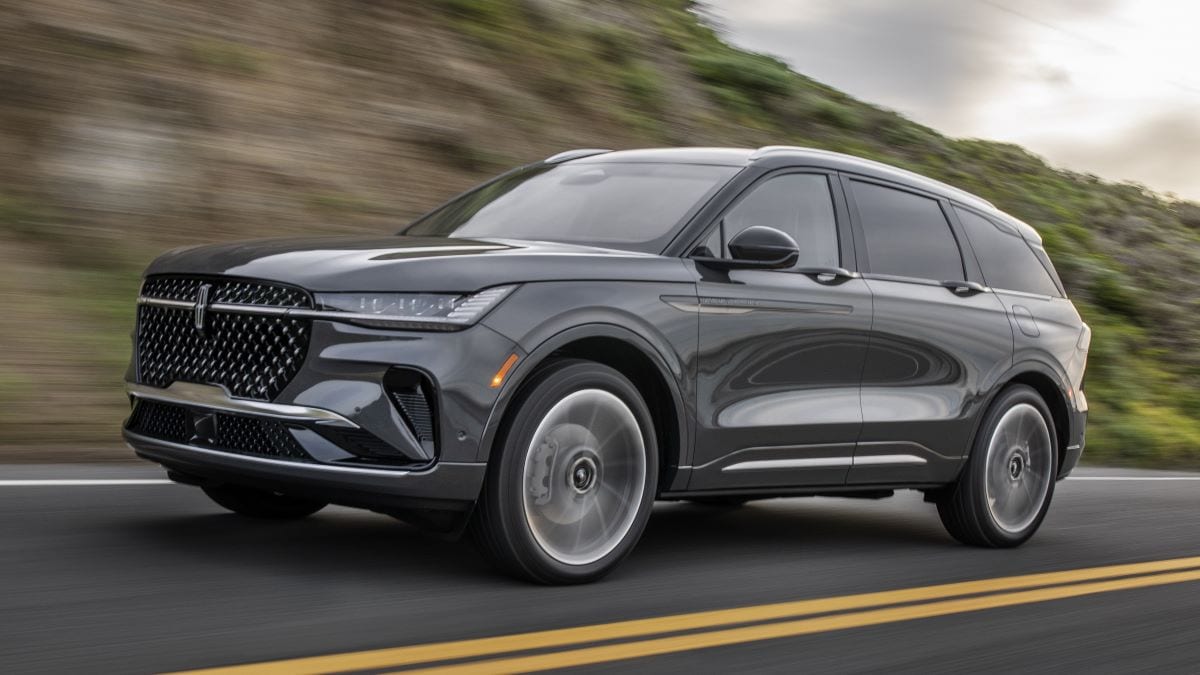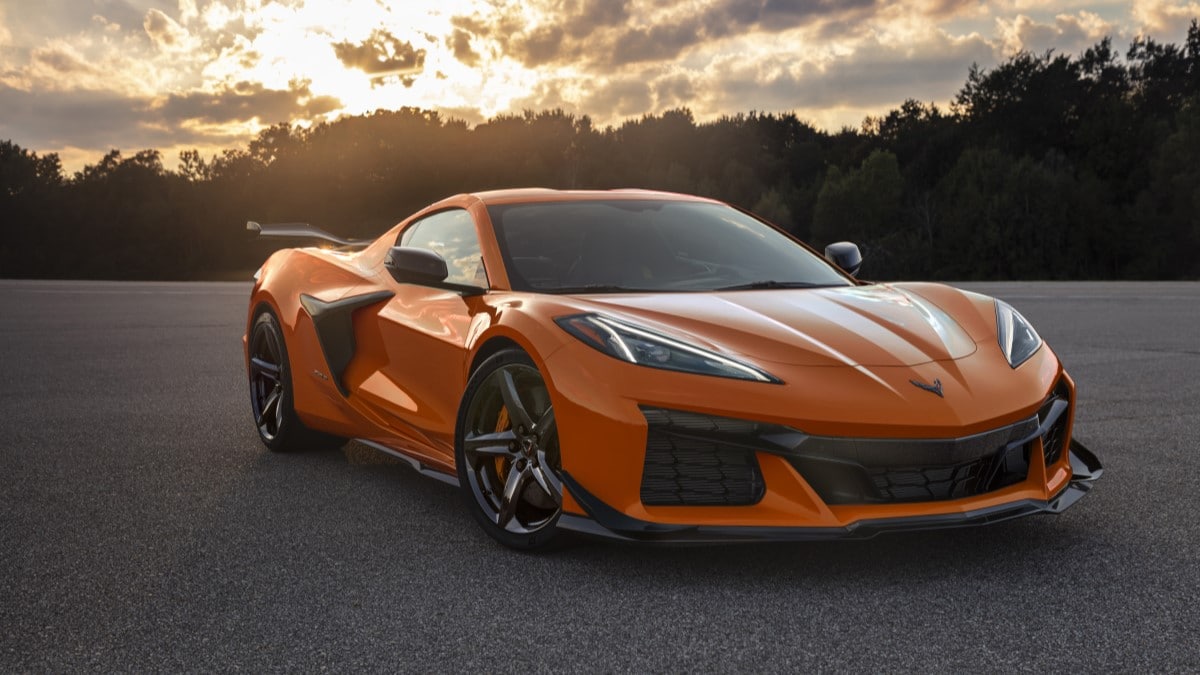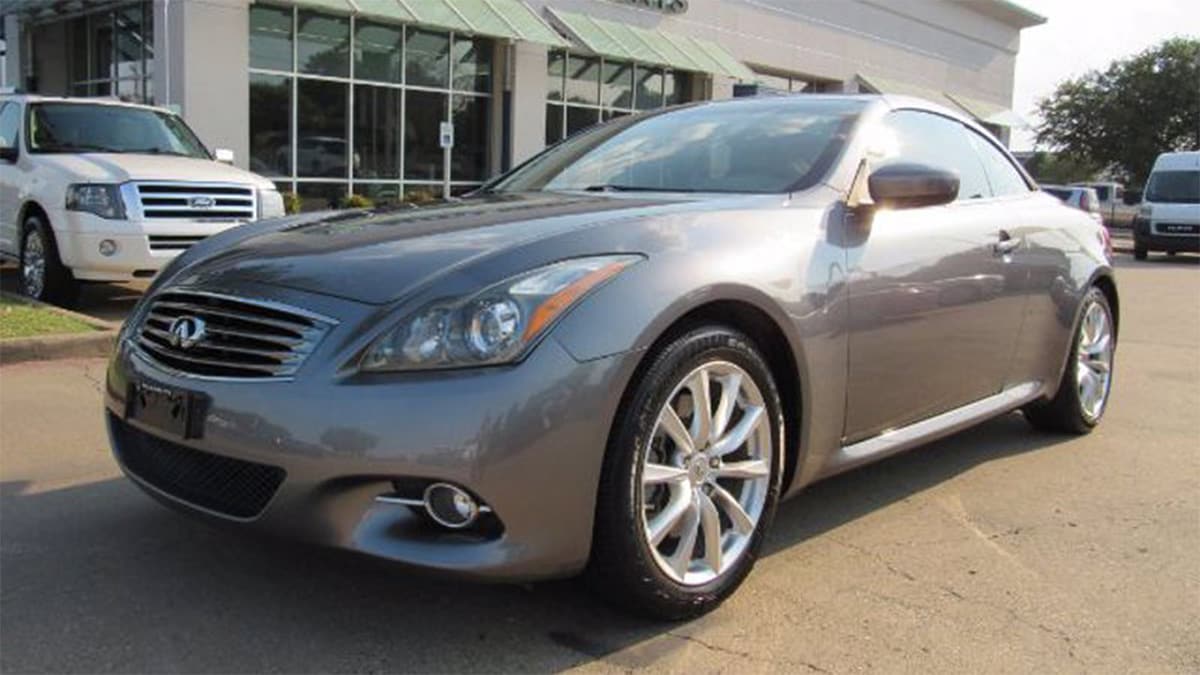Self-Driving Cars Quick Facts
- There are different levels of self-driving capabilities in cars.
- Many new cars driving on today’s roads offer some level of self-driving capability.
- Removing your attention from driving is unsafe in any car sold in the United States today.
The dream of the self-driving car — you get in, program your destination, ease the seat back, and let the car take you where you need to go. Read a book. Maybe take a nap or play a game on the in-car entertainment screen. Regardless, you will not need to watch the road. The car will get you there and back safely.
Are we there yet? If not, when will we be? Automation and autonomous driving are complex subjects. What engineers can safely deliver doesn’t always match what marketers want to sell.
In two states, Mercedes-Benz launched its Level 3 Drive Pilot self-driving technology last year. That means certain models can drive themselves under limited conditions. Meanwhile, government safety regulators warned Tesla’s self-driving tech is unsafe, and the carmaker has recalled every vehicle equipped with its “Full Self-Driving Capability” software.
This guide will walk you through what you need to know about automotive autopilot, self-driving technology, and the driver aids of today and tomorrow.
What Are Self-Driving Cars?
Self-driving cars are vehicles that fully operate without human intervention. Still, when discussing automotive assistance systems’ terminology, no one agrees on what to call anything in this field. From engineering jargon to marketing speak, the lingo continues to evolve.
Roughly speaking, you can sort the technologies people might refer to as self-driving into two categories — driver support and automation systems. Read on to see how they differ.
SAE International, a global association of engineers and related technical experts in the aerospace, automotive, and commercial vehicle industries, has laid out a useful framework for thinking about self-driving systems. It lists them as levels zero to five. However, not every level is classified as autonomous driving.
- Level 0 through Level 2: Offer driver support features.
- Level 3 through Level 5: Offer autonomous capabilities.
1. Driver Support
2. Autonomous Systems
Autonomous systems do the driving for you. Automakers today are pushing toward this technology. Waymo, a sister company to Google, is testing autonomous rideshare vehicles in places like Phoenix and San Francisco using converted Chrysler Pacifica minivans and other vehicles. Los Angeles may not be far behind. Zoox, backed by Amazon, is testing autonomous taxis in San Francisco and Las Vegas. General Motors’ self-driving Cruise unit offers rideshare vehicles in places like Phoenix, San Francisco, and Austin. However, the unit temporarily suspended operations last fall after a robotaxi in San Francisco struck and dragged a pedestrian hit by another vehicle.
Levels of Self-Driving Technology
SAE sorts the technologies into zero through five levels (OK, even automotive engineers don’t always do the logical thing). However, not every level is classified as autonomous driving. According to SAE, Levels 0 through 2 are considered driver support features, while Levels 3 through 5 are classified as having the autonomous capability.
Level 0
At Level 0, the car reacts only to the driver’s input. Even if it uses sensors to warn you of surrounding traffic, like a blind-spot alert system or a lane-departure warning, it still has no self-driving capability to correct or counter the perceived threat.
Level 1
At Level 1, your car can intervene slightly in your driving in an attempt to keep you safe. A lane-keeping system that helps steer to center you in a lane is a Level 1 technology.
RELATED: What is Adaptive Cruise Control?
Level 2
At Level 2, features communicate with one another, and more than one can be active simultaneously. An example of this autonomous technology is an adaptive cruise control system that adjusts your speed to keep you a certain distance from the car ahead while centering the car in its lane.
Level 2 systems are the most sophisticated technology sold on many cars in America. Some automakers describe these systems in ways that make them seem more advanced than Level 2 standards because they allow drivers to briefly take their hands off the steering wheel. Systems like Tesla’s Full Self-Driving and GM’s Super Cruise are considered Level 2.
Level 2 systems require drivers to keep their eyes focused ahead. Drivers must always be ready to take control of the car at a moment’s notice.
Level 3
At Level 3, the car drives itself under limited conditions, and the driver is not driving. However, drivers must remain aware and be prepared to take over. A Level 3 autonomous vehicle will manage speed and steering, negotiate curves, and follow a route. However, drivers must be ready and capable of taking control.
According to Honda and a few other reputable sites, the Honda 100 Legend Flagship car is the first Level 3 autonomous car. Right now, it’s only available in Japan for leasing. It was released in 2021.
Mercedes-Benz offers its Drive Pilot technology in Nevada and California. Nevada-approved Drive Pilot in Mercedes-Benz can take over driving up to certain speeds. The system allows drivers to take their eyes off the road, search the Internet, or watch a movie. According to Mercedes-Benz, the system is available in its 2024 S-Class and EQS Sedan models. The self-driving system is available with a subscription of $2,500.
Level 4
At Level 4, the car can drive itself in a fixed loop on known roads. The rider is not required to take over driving at any time. These vehicles may or may not have a steering wheel or pedals. In some places, Level 4 driverless rideshare vehicles (like Waymo’s) are in limited testing. But they are not yet approved for general use in any state.
Level 5
At Level 5, the car can drive itself under any conditions and on any road. These vehicles do not have steering wheels or pedals. At this point, Level 5 systems are theoretical.
Can You Trust Self-Driving Tech?
Tesla advertises its automation systems more than any other U.S. automaker. Still, its advertising materials state, “Autopilot and Full Self-Driving Capability are intended for use with a fully attentive driver, who has their hands on the wheel and is prepared to take over at any moment. While these features are designed to become more capable over time, the currently enabled features do not make the vehicle autonomous.”
General Motors’ Cruise unit plans to scale back its operations following the pedestrian incident in San Francisco. California’s DMV halted permits and testing of driverless vehicles, pending outcomes from safety testing.
Most self-driving systems currently for sale in the United States are SAE Level 2 or lower. Removing your attention from driving while behind the wheel of any car currently sold with this technology is unsafe. However, it is safe to briefly remove your hands from the wheel with some Level 2 systems under certain conditions. But you should remain prepared to take over the driving at a moment’s notice.
Do You Still Need to Pay Attention to the Road?
Yes. Always. Even when using driving assist technology in Levels 0 to 3, you need to be prepared to take over driving at any moment.
However, when using low-speed applications, including self-parking features, keeping your eyes on the road or staying inside the vehicle may not be needed. For example, some luxury brands offer a self-parking remote that handles this maneuver for things like parallel parking.
Which Cars Have Self-Driving Capability?
Virtually every automaker selling cars in the U.S. today offers driver-assistance systems that can reduce the driver’s workload. These include adaptive cruise control that can adjust speed to maintain distance from the car ahead or automatic emergency braking that can slow or stop the car to avoid hitting a vehicle or pedestrian or reduce the severity of a crash.
None of these systems are so reliable that the driver can take their attention from the task of driving, though.
Many manufacturers currently market systems up to and including Level 2 automation. This approach combines adaptive cruise control and lane-keeping assist into a system that requires that the driver keep their hands on the wheel but relieves some of the driver’s workload.
A prime example is cruise control, with stop-and-go capability that allows the driver to negotiate heavy traffic without using the pedals.
Here’s a breakdown of what to expect from several of them.
Ford BlueCruise
Ford and its Lincoln luxury division introduced a Level 2 automation system called BlueCruise. Buyers can order BlueCruise on many new Ford and Lincoln vehicles today.
Like Tesla’s Autopilot and GM’s Super Cruise systems, BlueCruise pairs adaptive cruise control with lane-keeping assistance. It allows drivers to temporarily remove their hands from the wheel while keeping their eyes on the road. BlueCruise automatically steers the vehicle using more than 100,000 miles of pre-mapped roads stored in the system. In BlueCruise-equipped cars, the driver’s instrument cluster switches to a blue background when driving on a road where the system can be activated.
A subscription to BlueCruise costs $2,100 for three years. However, you must buy an option package with all the necessary equipment to use it.
General Motors Super Cruise
General Motors offers its own advanced driver assistance system, an SAE Level 2 system called Super Cruise. Like Tesla’s Autopilot, Super Cruise includes an adaptive cruise control that will speed up and slow down the vehicle to maintain a driver-selected distance from the vehicle ahead. It also has a lane-keeping system that tries to center the car in its lane even through curves in the road, and automatic emergency braking that stops the car in an attempt to avert a collision.
Super Cruise requires drivers to stay alert and keep their hands near the wheel. It includes a driver monitoring system that watches the driver’s eyes and warns them if their attention seems to be drifting from the road. GM says, “Super Cruise allows the driver to drive hands-free when compatible road driving conditions allow the feature to be available. But the driver still needs to pay close attention to the road. Even while using the Super Cruise driver assistance technology, drivers should always pay attention while driving and not use a hand-held device.”
You can find Super Cruise on various Cadillac vehicles and others like the Chevy Bolt and Bolt EUV electric vehicles. Super Cruise is free for the first three years but requires a subscription otherwise.
Of note, Super Cruise works only on roads mapped by GM. The company mapped at least 200,000 miles of roads in the U.S. and Canada using lidar mapping technology.
Mercedes-Benz Drive Pilot and Distronic Plus with Steering Assist
Mercedes-Benz’s Distronic Plus with Steering Assist also combines adaptive cruise control with a lane-centering system. In keeping with Mercedes’ autobahn image, it functions at up to 120 mph and warns drivers if they are about to be passed.
Another feature, called Parktronic, allows drivers to follow the car’s commands under 20 mph as it self-parks the vehicle. The driver keeps control of the car with the gas and brake pedals. The driver needs to put the car in drive or reverse as it drives and steers itself into a parking space.
Mercedes-Benz recently unveiled its Drive Pilot technology as a Level 3 system for use in Nevada and California. The system can take over driving up to certain speeds, allowing drivers to do certain tasks and take their eyes off the road. According to Mercedes-Benz, the system will be available by subscription for $2,500 in its 2024 S-Class and EQS Sedan models.
So how do you know when a Mercedes-Benz is using Drive Pilot? Turquoise blue lights illuminate around the headlights and tail lights when the system is in use.
Nissan ProPilot
Nissan markets this as ProPilot, “a hands-on driver-assist system that combines Nissan’s Intelligent Cruise Control and Steering Assist technologies and includes a stop and hold function that can bring the vehicle to a full stop, hold in place, and can bring you back up to speed when traffic starts moving again.”
Newer versions use the vehicle’s navigation system information to slow for curves ahead and prompt the driver to adjust for posted speed limits. While it will keep the car centered in its lane, including on slight curves. However, the tech will not steer Nissans through curves like Kia’s, Ford’s, GM’s, or Tesla’s systems. Weather conditions also may impact the system.
PRO TIP: Kelley Blue Book editor, Renee Valdes recently tested the Nissan ProPilot system in a 2024 Nissan Ariya Empower+. She says it’s simple and easy to use, noting it works like adaptive cruise control. However, while driving through heavy downpours or construction zones, the system automatically switches from self-driving to adaptive cruise (called Intelligent Cruise Control in a Nissan). When it’s safe, the system seamlessly returns to ProPilot.
ProPilot is available on several Nissan models, including the Ariya, Rogue, Leaf, Ultima, and Pathfinder.
Subaru EyeSight
Subaru’s EyeSight system does much the same. It also has a pre-collision braking system that alerts the driver to an impending crash and applies full braking power to try to prevent it.
Tesla Autopilot and Full Self-Driving
Tesla markets its evolving suite of self-driving technologies more aggressively than any other automaker. This has led to current confusion about what level of automation Tesla cars are capable of. The electric car company sells the systems under two names: Autopilot, and Full Self-Driving.
Autopilot
Autopilot is a traffic-aware cruise control system that accelerates and slows the car to match the speed of the cars around it, combined with a lane-keeping assist system that centers the car in a clearly marked lane. That’s all it is. The marketing name “Autopilot” may make it sound considerably more advanced. But it is similar to adaptive cruise control and lane-keeping assist systems offered by most automakers, like Nissan’s ProPilot or Subaru’s EyeSight.
Older Teslas use torque sensors in the steering wheel to monitor the driver’s attention level and promptly alert them if their attention seems to be waning. Newer models use a more accurate camera for the same purpose.
Full Self-Driving
Tesla’s Full Self-Driving is considerably more sophisticated. Despite its name, it does not possess SAE Level 5 self-driving capability. Full Self-Driving can park the car in a parking space, back it out of a parking space, and change lanes on its own at highway speeds. A more advanced system in beta testing can slow the car for stop signs and traffic lights and navigate highway on-ramps and off-ramps. Tesla regularly sends updates to this system remotely to cars currently involved in the beta test.
However, Tesla recalled its Full Self-driving software last year and paused a system rollout to correct specific problems identified by the National Highway Traffic Safety Administration (NHTSA). Full Self-Driving does not allow drivers to take their attention off the road. They may temporarily take their hands from the wheel but should be prepared to take over driving at any moment.
Full Self-Driving is a costly option, even by luxury car standards. As of this writing, the Tesla self-driving price for the feature adds $12,000 to the total cost, or by subscriptions starting at $199/month. Tesla promises to update it regularly in hopes of eventually releasing an SAE Level 5 autonomous driving system to everyone who has purchased Full Self-Driving.
In a letter to California state regulators last year, Tesla said that Full Self-Driving would remain at Level 2. The company said it did “not expect significant enhancements” that would “shift the responsibility for the entire dynamic driving task to the system.” The letter said Full Self-Driving “will continue to be an SAE Level 2, advanced driver assistance feature.”
Consumers should be aware that the company has told shoppers it will someday have Level 5 capability and has told government regulators that it would not. Tesla is under investigation in California for potential false advertising claims of its Autopilot and Full Self Driving features.
Check out our YouTube videos on the Tesla Model Y and Tesla Model S.
Volvo Pilot Assist
Volvo’s Pilot Assist allows the driver to set a preferred speed and distance from the vehicle ahead. It can then change speed to maintain that distance and keep the car centered in its lane. But Pilot Assist will warn the driver audibly and shut itself off if the road starts to curve or if it detects that the driver has removed their hands from the wheel.
Traffic Jam Assists
Luxury automakers have begun developing semi-autonomous driving systems for heavy traffic use. They allow the driver to relax their attention and let the car accelerate and brake to keep its place in traffic, but systems work only at lower speeds.
For instance, BMW’s Active Driving Assistant Pro shuts off when traffic exceeds 40 mph. It will not steer the vehicle through curves.
Audi is developing its own Traffic Jam Pilot that, it says, should allow drivers to remove their hands from the wheel below 37 mph. However, that system has not received United States regulatory approval.
The Future of Self-Driving Cars
Engineers from more than a dozen companies are testing self-driving systems in hopes of producing an SAE Level 5 self-driving car. It seems safe to predict that the technology is coming.
But the engineering challenge of getting there is immense. A car that can drive itself on well-maintained roads may make a critical mistake on poorly maintained roads. What if a car that can react safely to normal traffic may not react safely to unusual situations? A car that can do everything engineers ask of it may fail when presented with a problem they never considered (in one recent incident, a self-driving car in testing was baffled by a truck bed full of traffic signs being delivered to a construction site. The car had no idea what to do).
Beyond the engineering challenge, state laws (plus the District of Columbia) must adapt to decide safety and liability issues before self-driving cars become common.
The market will also have its say. Volkswagen recently unveiled a concept car that would charge by the mile for self-driving capability. Executives reasoned that as long as getting your car to drive you somewhere costs less than a train ticket to that same place, they could charge for using the self-driving feature. So, while some automakers hope to charge buyers upfront for automation, others may only make it available for short-term rental.
Lastly, there’s the matter of marketing. It’s already growing difficult to sort out what manufacturers claim their cars can do from what they can actually do. That will only grow cloudier as technology advances.
So, while you may be able to own a self-driving car in your lifetime, it may be further away than advancing technology would indicate.
MORE: Best Cars and Top 10 Lists





